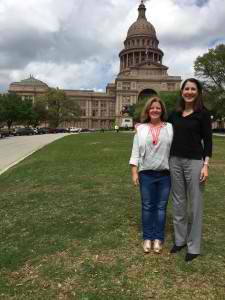Have you ever had an experience that takes a little while to digest? An experience with some many wonderful things that it can be challenging to know where to start? And just starting means reviewing your ‘notes’ on social media, turning insights into blogs, following up many emails and proactively suggesting what comes next.
 To top off a remarkable SXSW 2017, meeting Lee Rector, Director, Texas Workforce Investment Council, Office of Governor Greg Abbott for discussion over lunch was outstanding.
To top off a remarkable SXSW 2017, meeting Lee Rector, Director, Texas Workforce Investment Council, Office of Governor Greg Abbott for discussion over lunch was outstanding.
It isn’t every day that you come across someone with an understanding of Australia and the USA, with a similar approach to workforce planning as a simple system that is futures focused.
Lee explained that one very big difference between our countries is that each local workforce board develops a plan for its region which can be found in state law via Texas Government Code, Section 2308.304 with details at:
http://www.statutes.legis.state.tx.us/Docs/GV/htm/GV.2308.htm
It is really interesting to see this explicitly outlined as the Workforce Investment Act.
In US federal law there is the Workforce Innovation and Opportunity Act (WIOA), Section 108 https://www.gpo.gov/fdsys/pkg/PLAW-113publ128/pdf/PLAW-113publ128.pdf agreed in July 2014. There are similarities as the federal law is, in many ways, modeled on the Texas law, which predated the federal act.
As Lee advised the Texas Association of Workforce Boards (TAWB) is composed of the executive directors and chairs of the 28 local workforce boards. Greg Vaughn, Executive Director at TAWB generously shared information on how the boards work, their role, priorities and highlighted the opportunity to collaborate on best practices.
Impressively there are state workforce boards in the US with local workforce boards, similar to Texas, in every single state.
https://www.servicelocator.org/workforcecontacts.asp
The United States Conference of Mayors has a Jobs Education and the Workforce committee addressing workforce development needs to build a skilled workforce for a 21st Century global economy.
This type of model and legislation could be introduced to Australia as well as the many countries that we work across.
There is a national state workforce board chairs association, hosted by the National Governors Association Center for Best Practices (NGA) where they discuss emerging issues and topics. For example a group of Governors exploring apprenticeships recently visited Germany and Switzerland.
Perhaps the areas of future jobs and 21st Century Capabilities, based upon employer and industry engagement, enhanced by validated research could be something to consider?
Alongside the sister city relationship between Adelaide and Austin, there is the opportunity to work with Open State where relevant themes include Future human, Future enterprise and Future cities.
Where to next? Seems that there are many areas to collaborate, with people leading workforce planning and development across the globe, all taking action on the future workforce using an evidence based approach – very exciting and thank you Lee and Greg for your generosity and expertise.
If you are interested in planning future workforces, jobs and 21st Century Capabilities, please contact wendy@workorceblueprint.com.au, thank you.
April 2017

